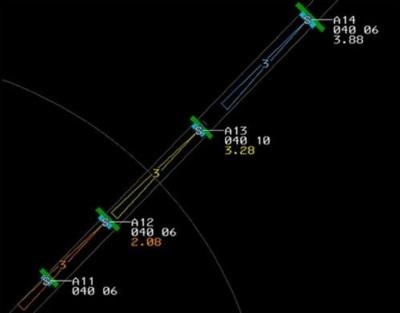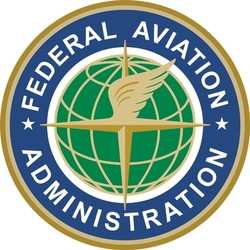Fri, Sep 09, 2011
First Use At Minneapolis-St. Paul Leads Way For NextGen Support
Nationally
Air traffic controllers at the Minneapolis Terminal Radar
Approach Control (TRACON) are using an innovative next generation
tool developed by The FAA and Lockheed Martin to help maintain safe
separation between aircraft on final approach. The advancement
enhances the Common Automated Radar Terminal System (CARTS), a
program Lockheed Martin primes for the FAA at more than 100 TRACONs
nationally.

Known as Automated Terminal Proximity Alert (ATPA), the tool
automatically lets controllers at the Minneapolis-St. Paul
International Airport know what the distance is between aircraft
that are flying in-line instrument approaches. Another feature is
that the system will visually alert a controller when a trailing
plane is predicted to get too close to an aircraft ahead of it,
allowing the controller to take action before a loss of standard
separation occurs. The tool is an example of how the FAA is
applying applications today that are tied to its next generation
air transportation strategy.
"ATPA is a tool that will help controllers optimize performance
using existing separation standards," said Sandra Samuel, vice
president of Lockheed Martin's IS&GS-Civil Transportation
Solutions business. "Being able to roll out ATPA now demonstrates
Lockheed Martin's commitment to providing the FAA with NextGen
improvements today, not tomorrow."
One useful feature of ATPA is the distance processing. The
controller's radar display will show the distance between two
aircraft on final approach, placing the amount of separation next
to the track of the trailing flight.

Another feature controllers at the Minneapolis TRACON are
finding helpful is the ATPA's warning and alert cones. The cones
show up on a controller's radar display when the trailing plane is
predicted to get too close to the aircraft ahead of it. The narrow
end of the cone starts at the trailing plane, with the broader end
extending toward the leading aircraft. The colors of the cones are
changed when the aircraft are projected to get closer than the
minimum required separation, prompting the controller to take
action.
"Controllers had a previous tool that required them to enable
graphics manually, but their desire for automation led to the
development of ATPA," Samuel said. "This new capability will
support increased arrival rates by helping controllers consistently
maintain the precise minimum aircraft separation standards."
The St. Louis TRACON is also using the tool, and it should be
available at the Chicago and Denver TRACONs soon. Current plans are
to bring ATPA to other CARTS facilities that have color displays by
the end of the year.
More News
Also: Outlaw Prop 4 Mooney, Ready 4 Duty, Ukrainian F-16 Pilot Lost, Blue Origin Flt On his journey to become the first pilot to land solo on all seven continents, 19-year-old Etha>[...]
Also: DarkAero Update, Electric Aircraft Symposium, Updated Instructor Guide, OSH Homebuilts Celebrate The long-awaited Sonex High Wing prototype has flown... the Sonex gang tells >[...]
Discrete Code As used in the Air Traffic Control Radar Beacon System (ATCRBS), any one of the 4096 selectable Mode 3/A aircraft transponder codes except those ending in zero zero; >[...]
From 2023 (YouTube Edition): Deviation from the Historical Mean Racine, Wisconsin-based DeltaHawk is a privately-held manufacturer of reciprocating engines for aircraft and hybrid >[...]
Aero Linx: Formation and Safety Team (F.A.S.T.), USA The Formation and Safety Team (FAST) is a worldwide, educational organization dedicated to teaching safe formation flying in Wa>[...]
 Airborne 07.02.25: TikToker Arrested, Vietnam A/L Ground Hit, ATC Modernization
Airborne 07.02.25: TikToker Arrested, Vietnam A/L Ground Hit, ATC Modernization Airborne Affordable Flyers 07.03.25: Sonex HW, BlackShape Gabriel, PRA Fly-In 25
Airborne Affordable Flyers 07.03.25: Sonex HW, BlackShape Gabriel, PRA Fly-In 25 ANN's Daily Aero-Term (07.07.25): Discrete Code
ANN's Daily Aero-Term (07.07.25): Discrete Code Classic Aero-TV: DeltaHawk Aero Engine Defies Convention
Classic Aero-TV: DeltaHawk Aero Engine Defies Convention ANN's Daily Aero-Linx (07.07.25)
ANN's Daily Aero-Linx (07.07.25)




